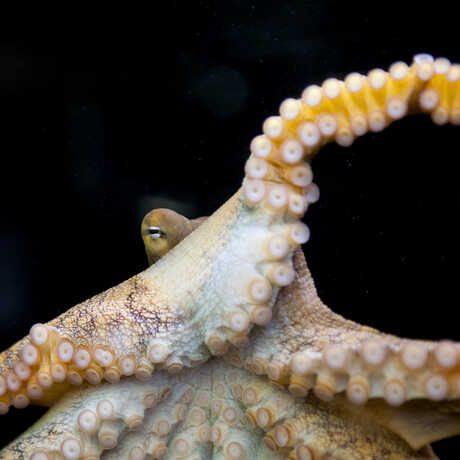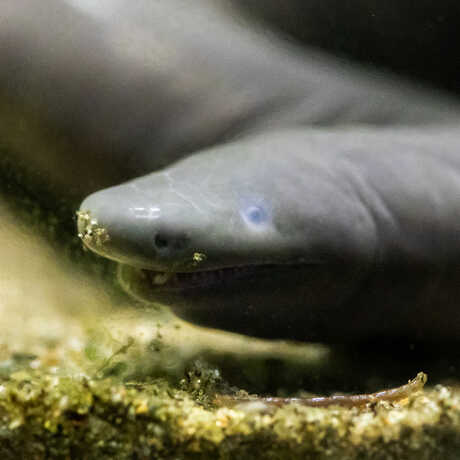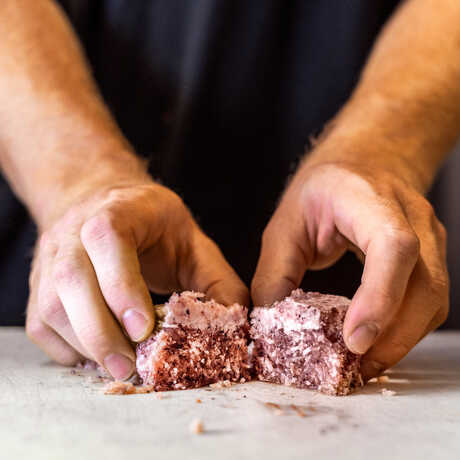Claude Drops His Morning Routine
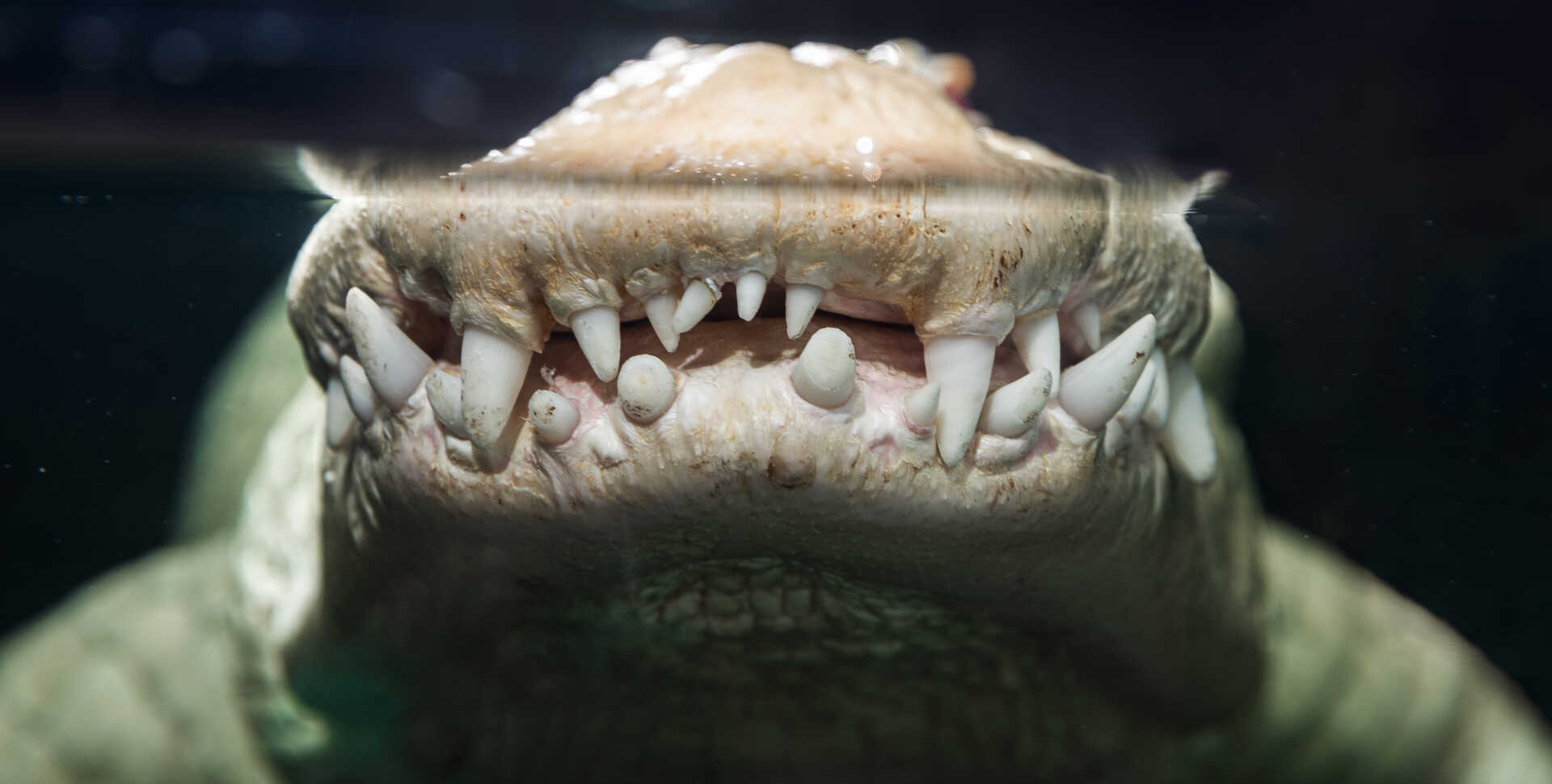
One of Steinhart Aquarium’s most popular residents, Claude the American alligator (Alligator mississippiensis) has been the Academy’s unofficial mascot since his arrival in 2008. His cushy life in the Swamp exhibit provides him with everything a happy, healthy twenty-something alligator needs: a warm rock to lounge on, three snapping turtle buddies, regular back scratches, and plenty of high quality grub, hand-fed to him once a week by adoring biologists whose raison d'être is his health and wellbeing.
Which brings us back to those delicious fish heads: To celebrate Claude’s 28th hatchday (which is September 15!), let’s see what a weekly morning feed looks like for our gentle giant.
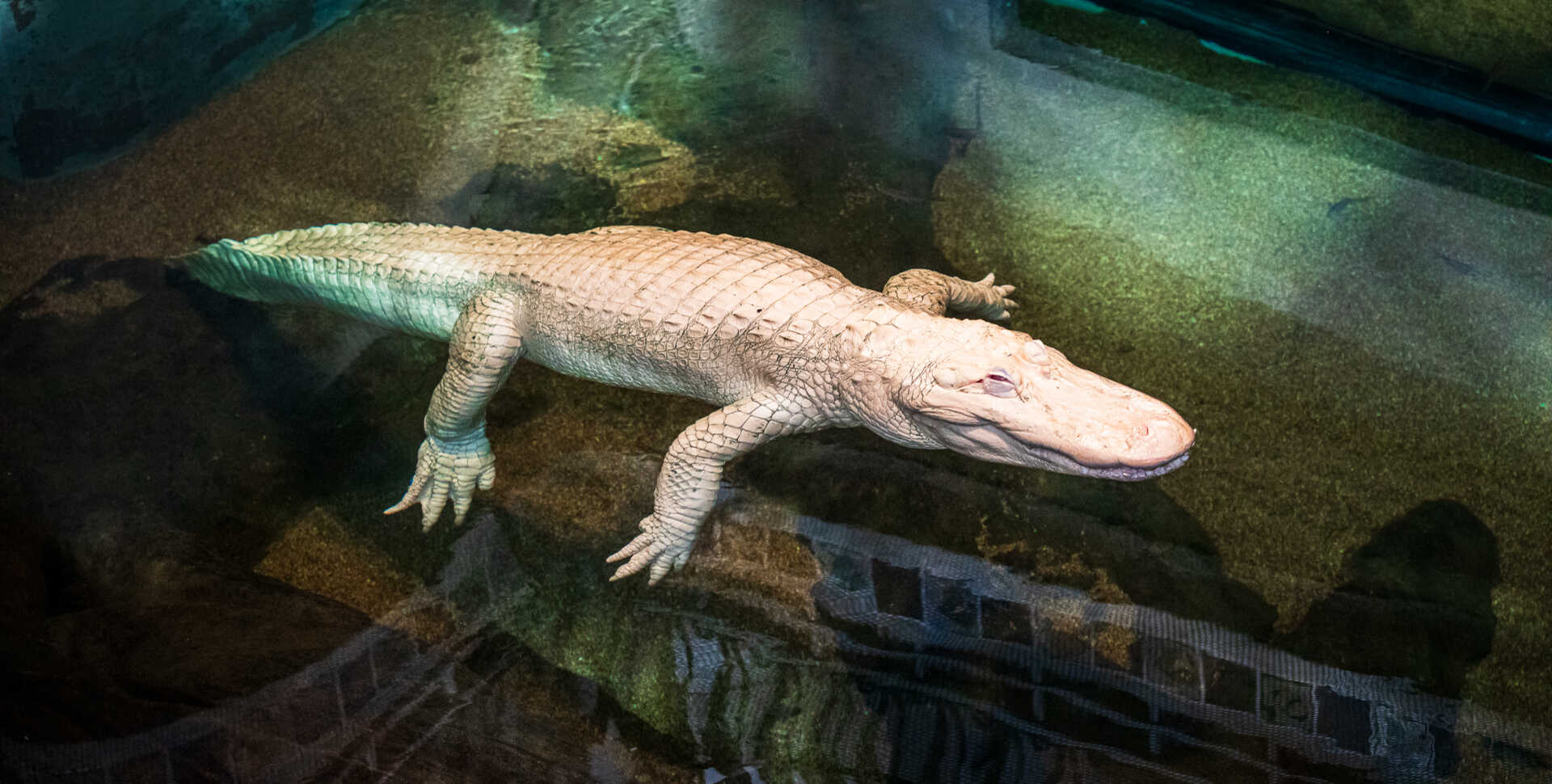
7 am
It’s a crisp, foggy morning in San Francisco’s Golden Gate Park, and today is a special day for Claude: It’s feeding day! And on feeding days he has to wake up early so his care is completed before museum guests arrive. In the wild, ambush predators like Claude would go weeks or even months between large meals, but feeding Claude once a week allows biologists to keep up with his training, monitor his health, and keep him satiated enough to not look at habitat-mates as food.
With Claude still snoozing on his warming rock, a team of biologists prepare for the morning’s activities. The museum won’t be open to the public for another 2 ½ hours, but the building is hopping with aquarium staff bustling about caring for their charges. To keep everyone safe, Claude gets a wide berth, and orange cones are placed in a 10-foot perimeter around the Swamp.
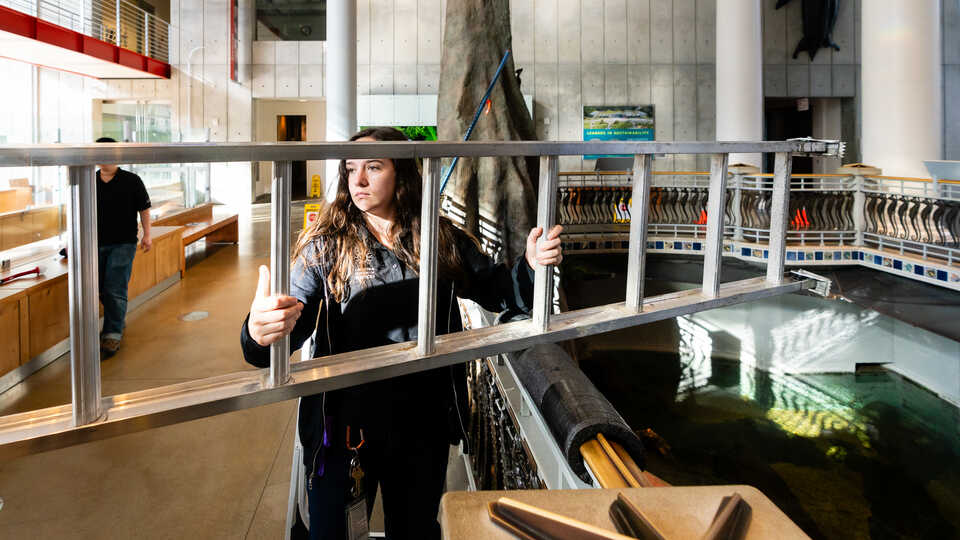
Steinhart Aquarium Biologist Jessica Witherly gets ready to descend into the Swamp.
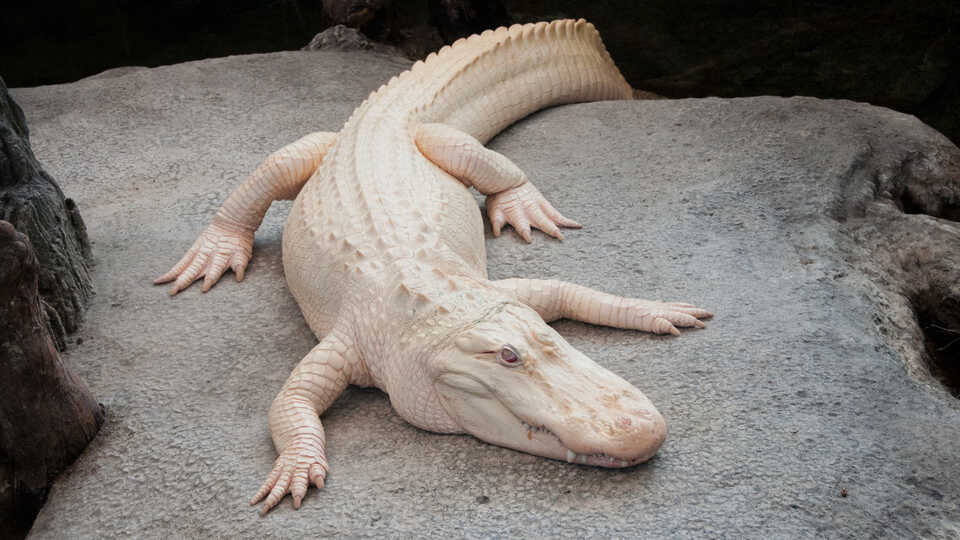
Claude is not a morning person—he is often so still that guests ask if he’s fake—but he can be stirred to action for the right reason.
Biologist Jessica Witherly brings a ladder, feeding tongs, and other tools of the aquarium trade to the Swamp. Director of Animal Care and Wellbeing Brenda Melton arrives with a bucket of delectable fish heads (preferably trout, Claude’s favorite) and recently thawed rats, fresh from the aquarium’s commissary.
7:30 am
Time to wake the sleeping prince, which can be challenging on brisk days. As a cold-blooded reptile, Claude has to work even harder to get moving on a chilly morning. But the clock is ticking and he can’t bask under the heat lamp forever. The biologists use a verbal command to rouse him, and after several repetitions he begins to stir.
8 am
Once awake and with the aroma of breakfast wafting through his (highly sensitive) nostrils, Claude lazily slips from his warming rock into the water and swims toward the sound of the biologist’s voice. To ensure safety for both human and animal, Claude is trained to swim to a small pen on the north side of the Swamp. Once he’s in place it’s safe for the biologists to climb down into his habitat. (Guests often ask how Steinhart staff get into the Swamp: No secret entrances or hidden doors here—just a good, old-fashioned ladder.) Three biologists are now in the habitat, with one standing topside with emergency equipment, just in case.
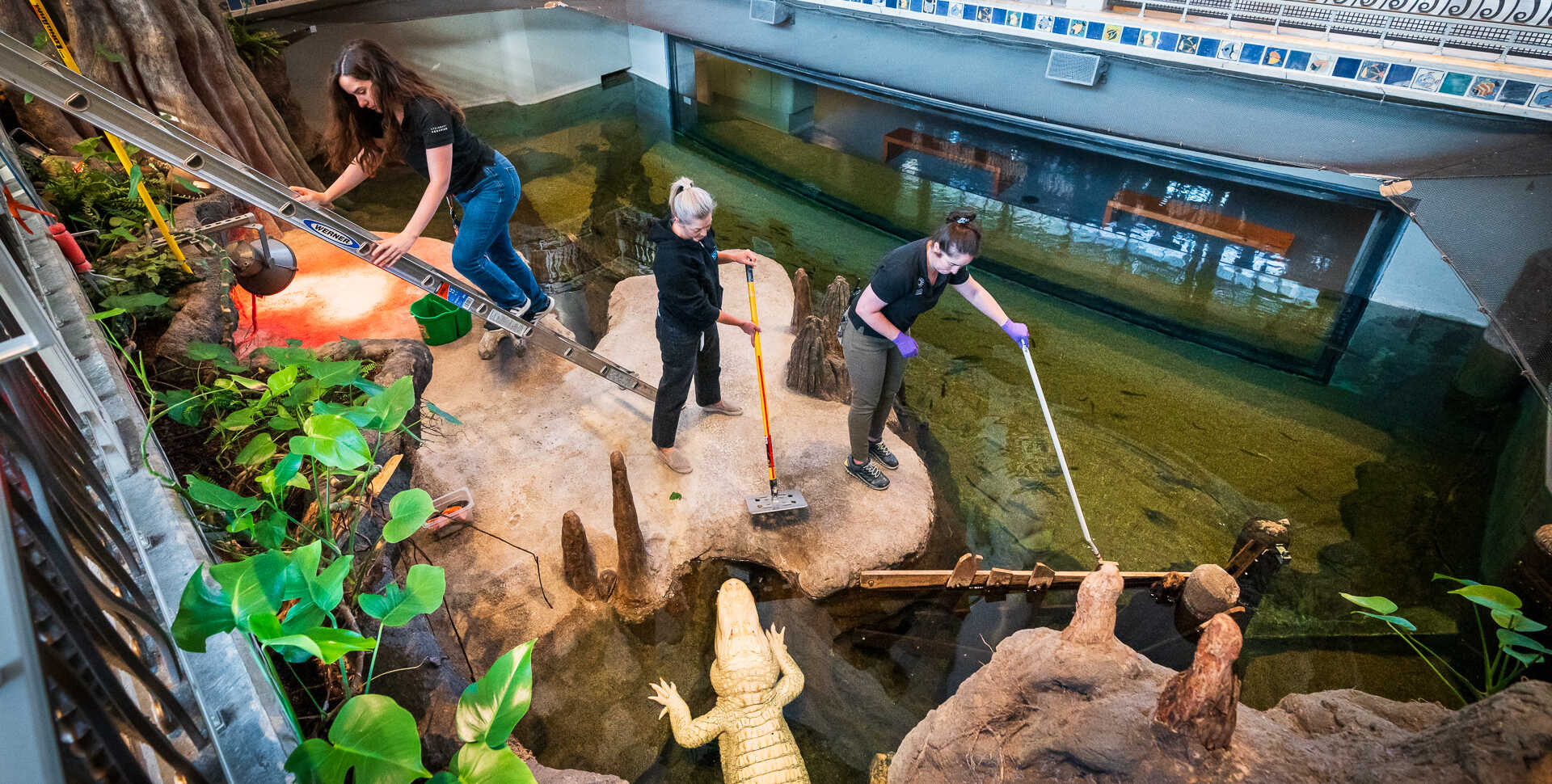
8:30 am
Claude’s albinism causes poor vision, so audio cues are a critical part of how biologists care for him. He’s trained to respond to a number of verbal commands—his name, of course, and “home,” which Witherly calls out to signal that it’s time to eat.
At the sound of the “h” word, Claude dutifully touches his snout to a certain rock, opens wide, and waits for a tasty trout or rat to be placed (via feeding tongs) into his toothy maw. On any given feeding day, Claude’s diet will consist of approximately 1,500 grams of fish and 1,250 grams of rats, which will tide him over for about a week.
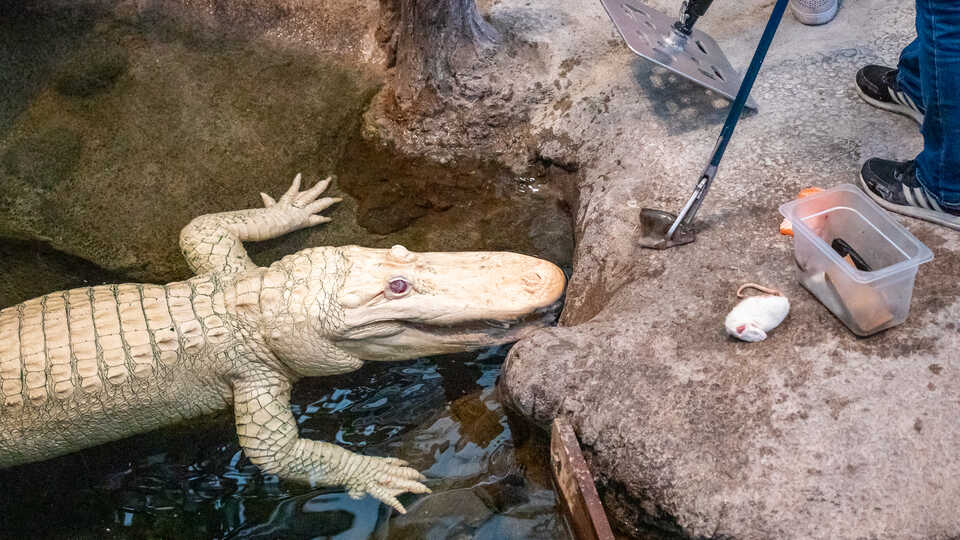
Even with the smell of a delicious fish head wafting over him, Claude exhibits his excellent training by waiting until he’s given the cue to...
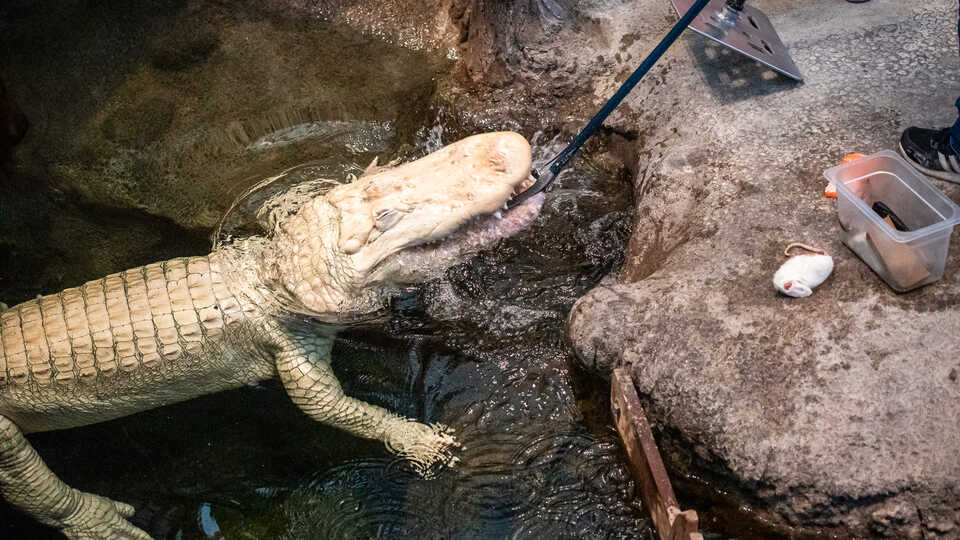
...CHOMP!
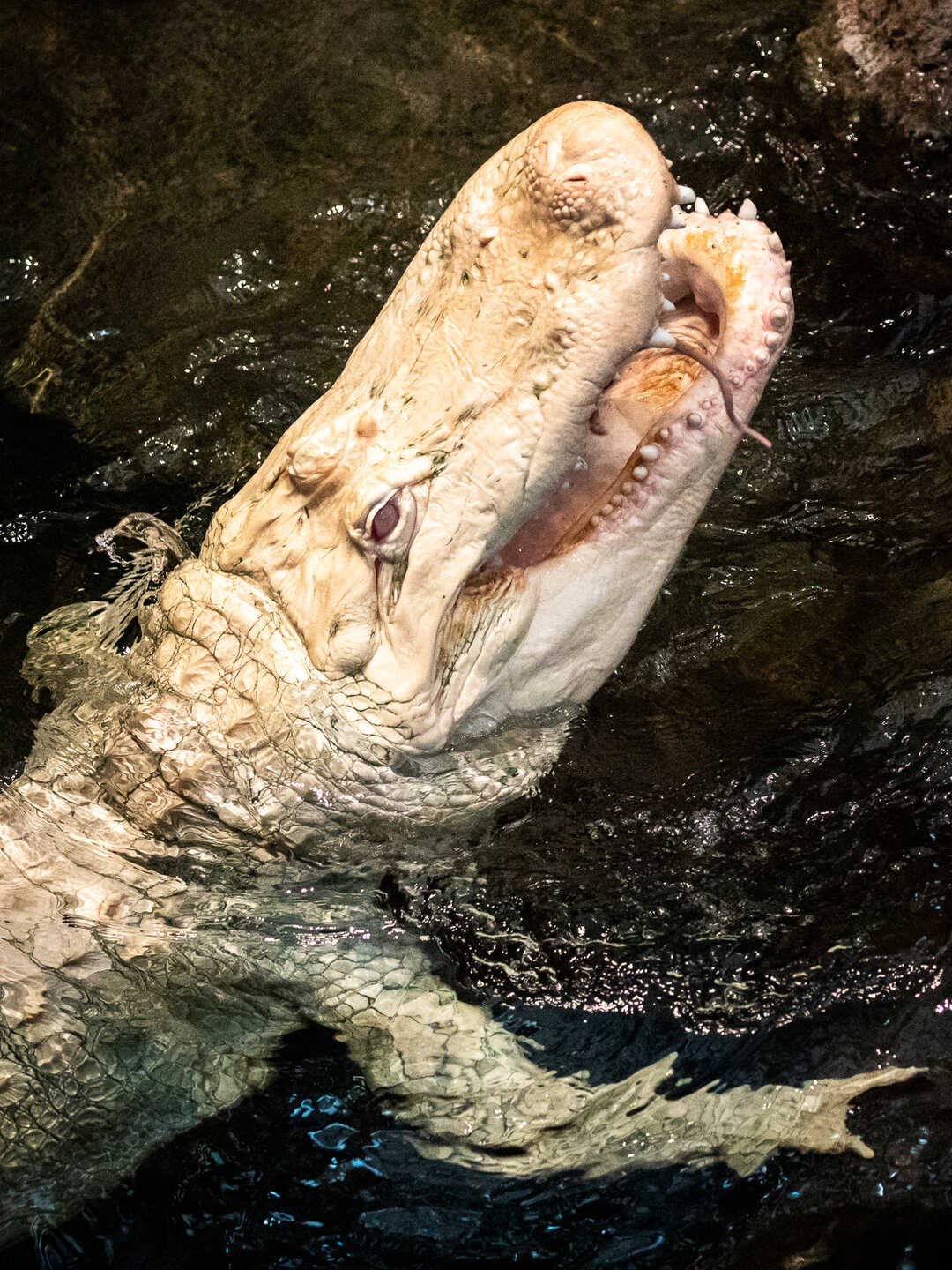
8:45 am
Meanwhile, at the other end of the Swamp, Senior Biologist Holly Rosenblum is giving the three alligator snapping turtles (Macrochelys temminckii) their breakfast as well. The all-female turtle crew (Morla, Donatello, and Raphael) usually eat the same diet as Claude, just in a smaller quantity.
But wait: How can an apex predator like Claude peacefully coexist alongside potential prey like turtles and fish? Luckily for his Swamp-mates, Claude’s poor vision means he doesn’t share his species’ natural hunting prowess, so he mostly just ignores them. (Plus, when you're hand-fed trout heads and rats every week, the prospect of chasing turtles and fish around hardly seems worth the calories.)
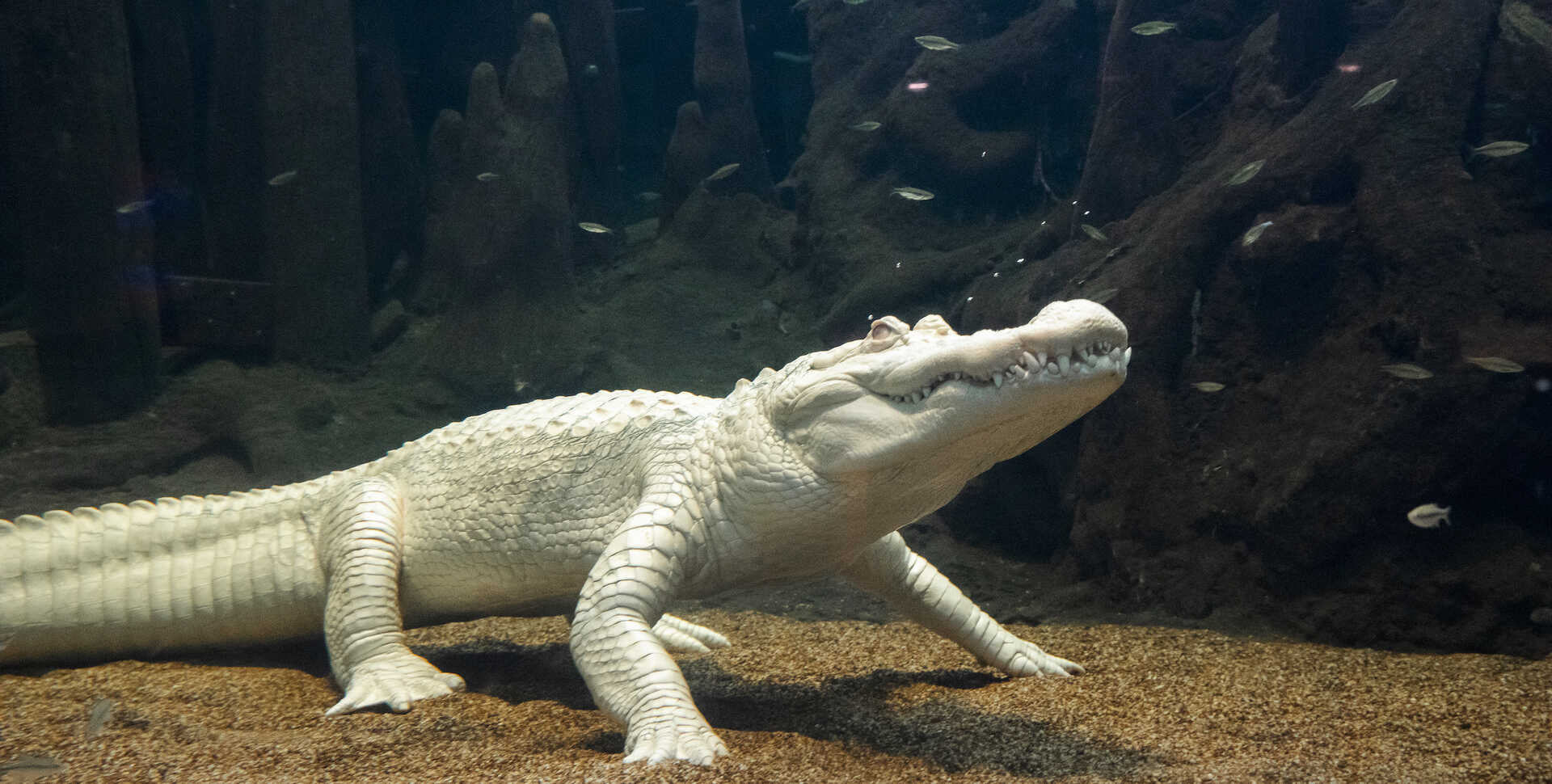
9 am
A mini spa day completes Claude’s enviable morning routine. Alligators naturally accumulate harmless algae, but the green tinge is particularly noticeable on Claude’s white skin, especially between the scutes (scales) on his back. Using a long-armed brush, Witherly gently scrubs Claude’s back, head, and tail to remove the algae. It’s easy to see how much he’s enjoying it as he closes his eyes to savor the blissful back scratch.
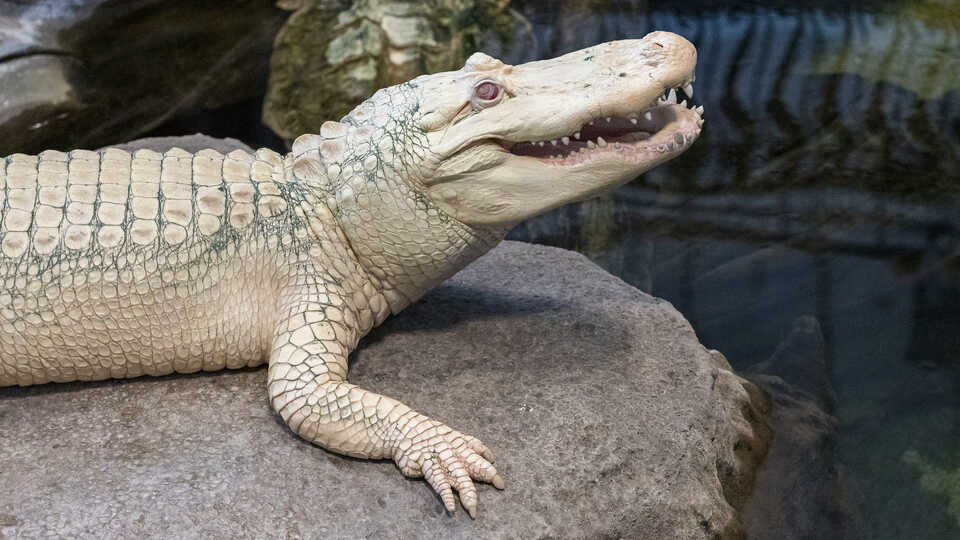
Claude naturally accumulates a buildup of green algae on his back.
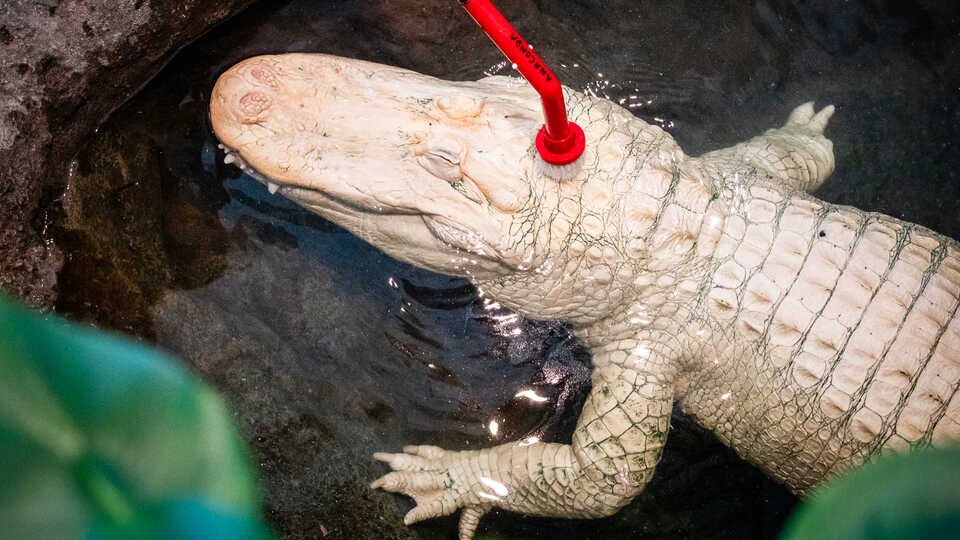
Ahhh...that's the spot.
9:15 am
With just 15 minutes until opening, the biologists kick it into high gear. They climb out of the Swamp, stow their ladder and tools, and remove the safety barrier they placed at the beginning of the feed. No evidence remains of the morning’s flurry of activity—except for a serene (and satiated) Claude, ready to greet his adoring public.
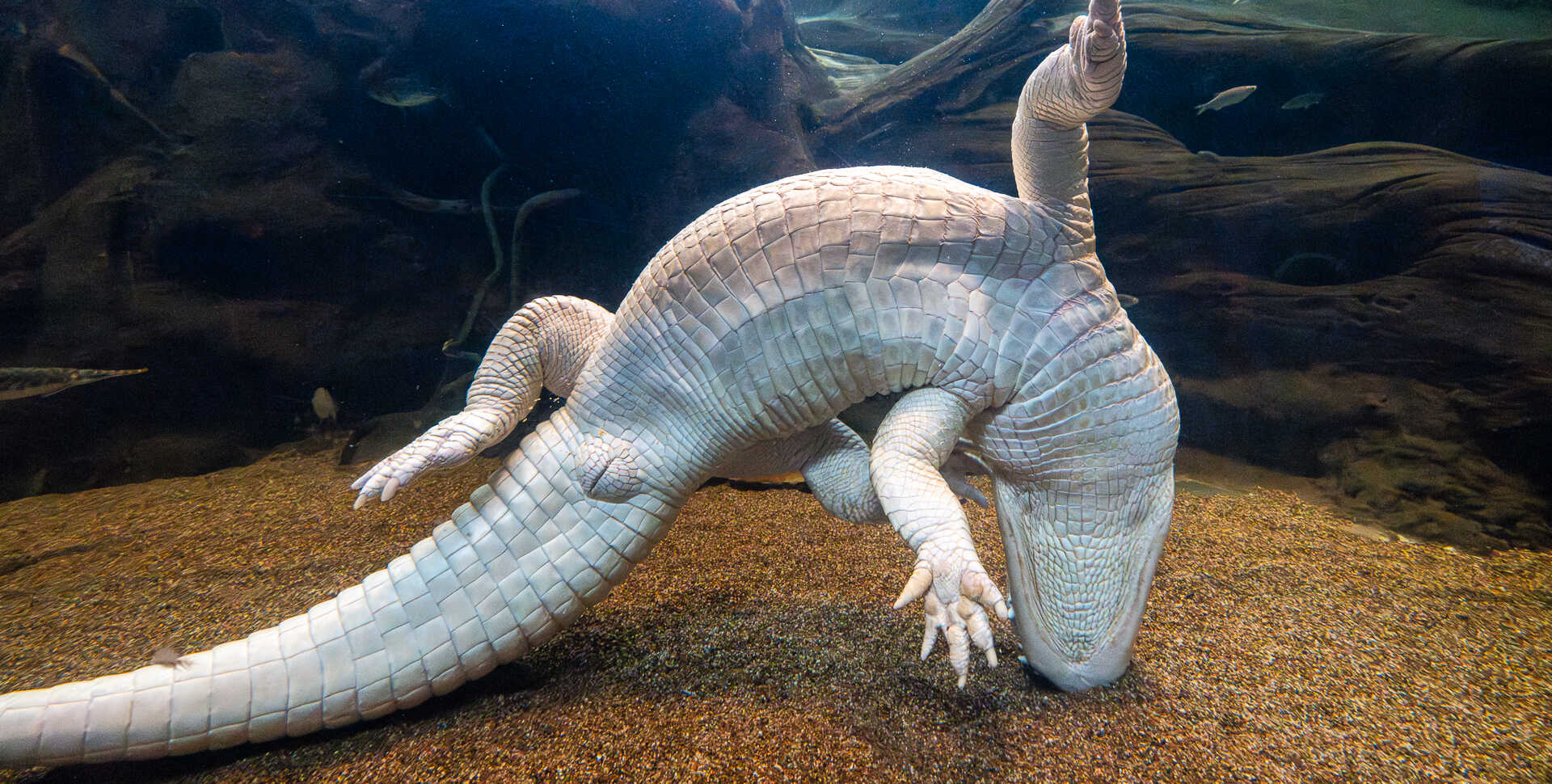
11 am
It’s approaching the busiest part of the day in the museum—and the sleepiest part of the day in the Swamp. With a full belly, Claude lumbers back onto his favorite warming rock and settles in for a mid-morning nap…which will likely evolve into a late-morning nap…and perhaps blossom into a whole-afternoon nap.
It’s Claude’s world: We’re just living in it.
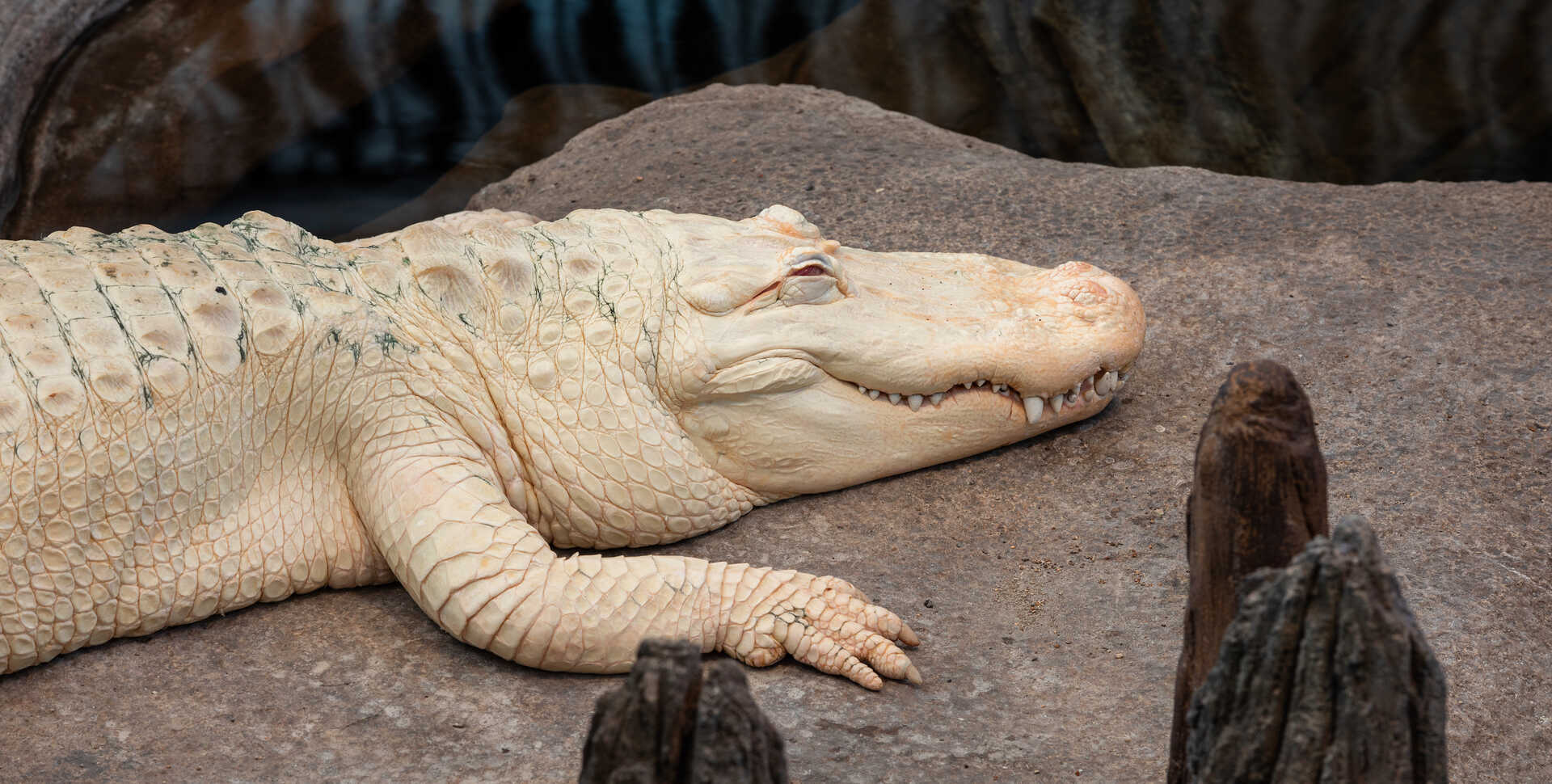
Craving more Claude? Say hi at Swamp Talk during your next visit. (And these Claude GIFs should tide you over in the meantime.)
